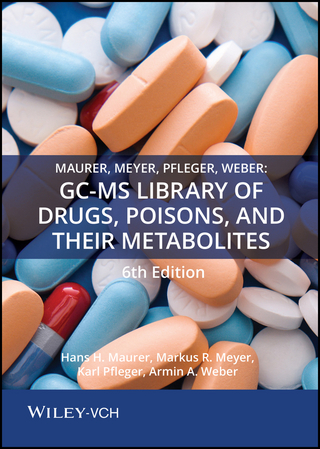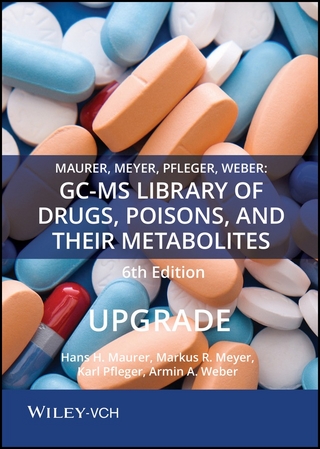
Process–Induced Food Toxicants – Occurrence, ion, Mitigation, and Health Risks
Wiley-Blackwell (Hersteller)
978-0-470-43010-1 (ISBN)
- Keine Verlagsinformationen verfügbar
- Artikel merken
Process-Induced Food Toxicants combines the analytical, health, and risk management issues relating to all of the currently known processing-induced toxins that may be present in common foods. It considers the different processing methods used in the manufacture of foods, including thermal treatment, drying, fermentation, preservation, fat processing, and high hydrostatic pressure processing, and the potential contaminants for each method. The book discusses the analysis, formation, mitigation, health risks, and risk management of each hazardous compound. Also discussed are new technologies and the impact of processing on nutrients and allergens.
Richard H. Stadler, PhD, is the head of the Quality Management Department at the Nestle Product Technology Center in Orbe, Switzerland. DAVID R. LINEBACK, PhD, is the Director (Retired) of the Joint Institute for Food Safety and Applied Nutrition (JIFSAN) at the University of Maryland.
Preface. List of contributors. PART I: Specific Toxicants Related to Processing Technology. 1 Introduction to Food Process Toxicants ( David R. Lineback and Richard H. Stadler ). 1.1 History and Role of Food Processing. 1.2 General Approaches to Food Processing. 1.3 Concerns about Food Safety during Food Processing. 1.4 Food-Borne Processing Toxicants: Setting Priorities. 1.5 Issues of Process Toxicants Present in Small Amounts in Foods. 1.6 Outlook. 2 Thermal Treatment. 2.1 Acrylamide ( Craig Mills, Donald S. Mottram, and Bronislaw L. Wedzicha ). 2.2 Acrolein ( Takayuki Shibamoto ). 2.3 Heterocyclic Aromatic Amines ( Robert J. Turesky ). 2.4 Hazards of Dietary Furan ( P. Michael Bolger, Shirley S-H. Tao, and Michael Dinovi ). 2.5 Hydroxymethylfurfural (HMF) and R elated Compounds ( Francisco J. Morales ). 2.6 Chloropropanols and Chloroesters ( Colin G. Hamlet and Peter A. Sadd ). 2.7 Maillard Reaction of Proteins and Advanced Glycation End Products (AGE s) in Food ( Thomas Henle ). 2.8 Polyaromatic Hydrocarbons ( Jong-Heum Park and Trevor M. Penning ). 3 Fermentation. 3.1 Ethyl Carbamate (Urethane) ( Colin G. Hamlet ). 3.2 Biogenic Amines ( Livia Simon Sarkadi ). 4 Preservation. 4.1 N -Nitrosamines, Including N -Nitrosoaminoacids and Potential Further Nonvolatiles ( Michael Habermeyer and Gerhard Eisenbrand ). 4.2 Food Irradiation ( Eileen M. Stewart ). 4.3 Benzene ( Adam Becalski and Patricia Nyman ). 5 High Hydrostatic Pressure ( Alexander Mathys and Dietrich Knorr ). 5.1 Introduction. 5.2 HPP. 5.3 Chemical and Matrix Effects. 5.4 Microbial Effects. 5.5 Allergenic Potential. 5.6 Conclusion. Annex. References. 6 Alkali and/or Acid Treatment. 6.1 The Dietary Significance of Processing-Induced Lysinoalanine in Food ( Mendel Friedman ). 6.2 Dietary Significance of Processing-Induced D-Amino Acids ( Mendel Friedman ). 6.3 Chloropropanols ( Jan Velisek ). PART II: General Considerations. 7 Application of HACCP for the Management of Processing Contaminants ( Yasmine Motarjemi, Richard H. Stadler, Alfred Studer, and Valeria Damiano ). 7.1 Introduction. 7.2 Processing Contaminants: Risks and Control Measures. 7.3 HACCP: the Backbone of Food Safety Assurance. 7.4 Application of HACCP to Processing Contaminants. 7.5 A Case Study on the Application of the HACCP Approach for the Management of Processing Contaminants: Extruded Cereal Snack. 7.6 Conclusions. Acknowledgment. References. 8 Emerging Food Technologies ( Fanbin Kong and R. Paul Singh ). 8.1 Introduction. 8.2 Pulsed Electric Fields. 8.3 Pulsed UV Light. 8.4 Ultrasound. 8.5 Microwave and Radio-Frequency Processing. 8.6 Ohmic Heating. 8.7 Infrared Heating. References. 9 Food Processing and Nutritional Aspects ( Josef Burri, Constantin Bertoli, and Richard H. Stadler ). 9.1 Introduction. 9.2 Food Processing and Major Benefits. 9.3 Conclusions and Future Research Needs. References. 10 Risk Communication ( David Schmidt and Danielle Schor ). 10.1 Introduction. 10.2 Attitudes about Food-Related Risks. 10.3 Ranking Risks: Placing Risks in Context. 10.4 Effective Communication Techniques: Examples. 10.5 Challenges and Barriers. 10.6 Future Prospects. References. 11 Risk/Risk and R isk/Benefit Considerations ( Leif Busk ). 11.1 Introduction. 11.2 Mitigation and Potential Risk of Other Possible Food Safety-Related Issues. 11.3 Research Needs. 11.4 Challenges and Future Prospects. References. Index.
| Erscheint lt. Verlag | 1.3.2009 |
|---|---|
| Verlagsort | Hoboken |
| Sprache | englisch |
| Themenwelt | Studium ► 2. Studienabschnitt (Klinik) ► Pharmakologie / Toxikologie |
| Naturwissenschaften ► Chemie | |
| Technik ► Lebensmitteltechnologie | |
| ISBN-10 | 0-470-43010-9 / 0470430109 |
| ISBN-13 | 978-0-470-43010-1 / 9780470430101 |
| Zustand | Neuware |
| Haben Sie eine Frage zum Produkt? |
aus dem Bereich

